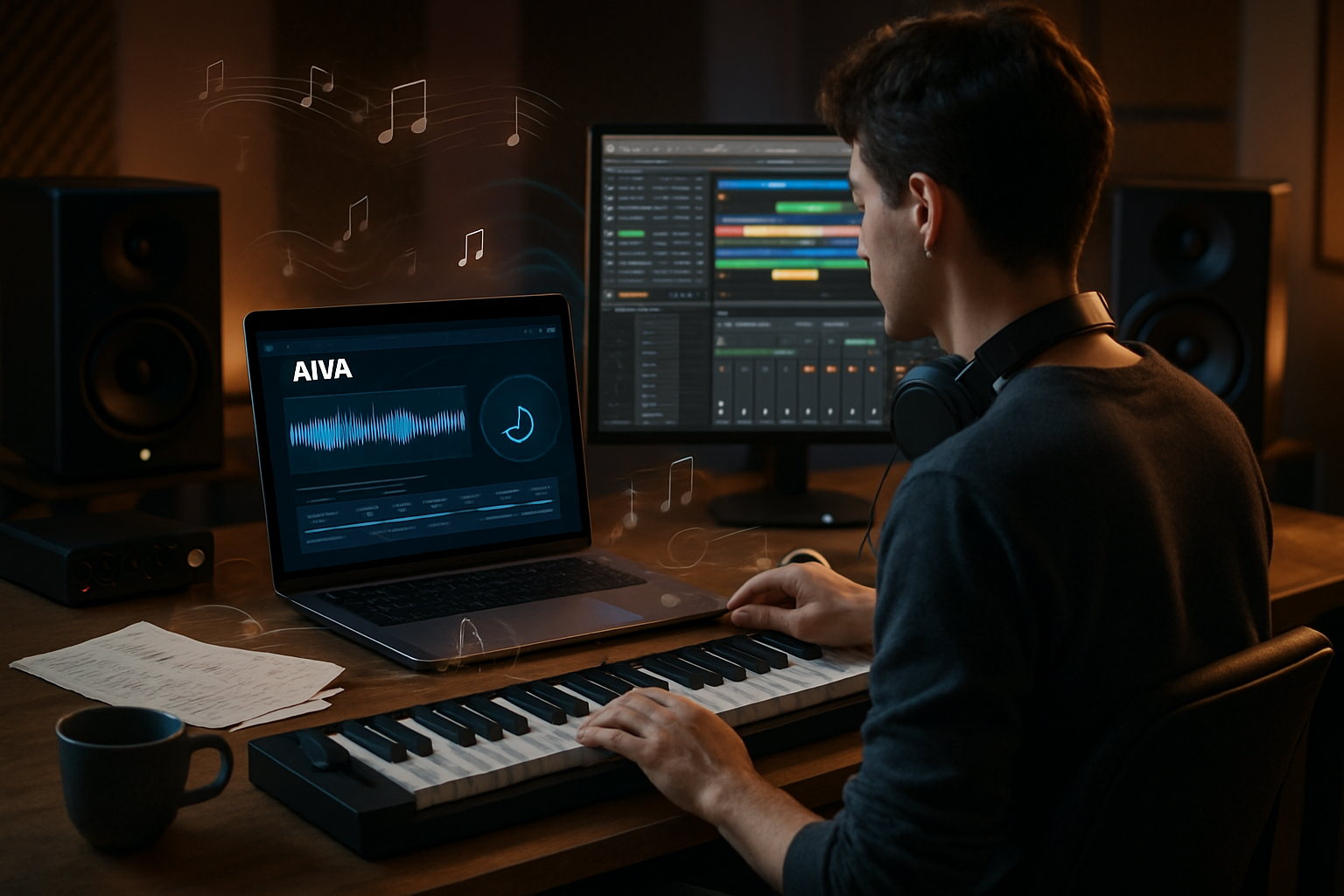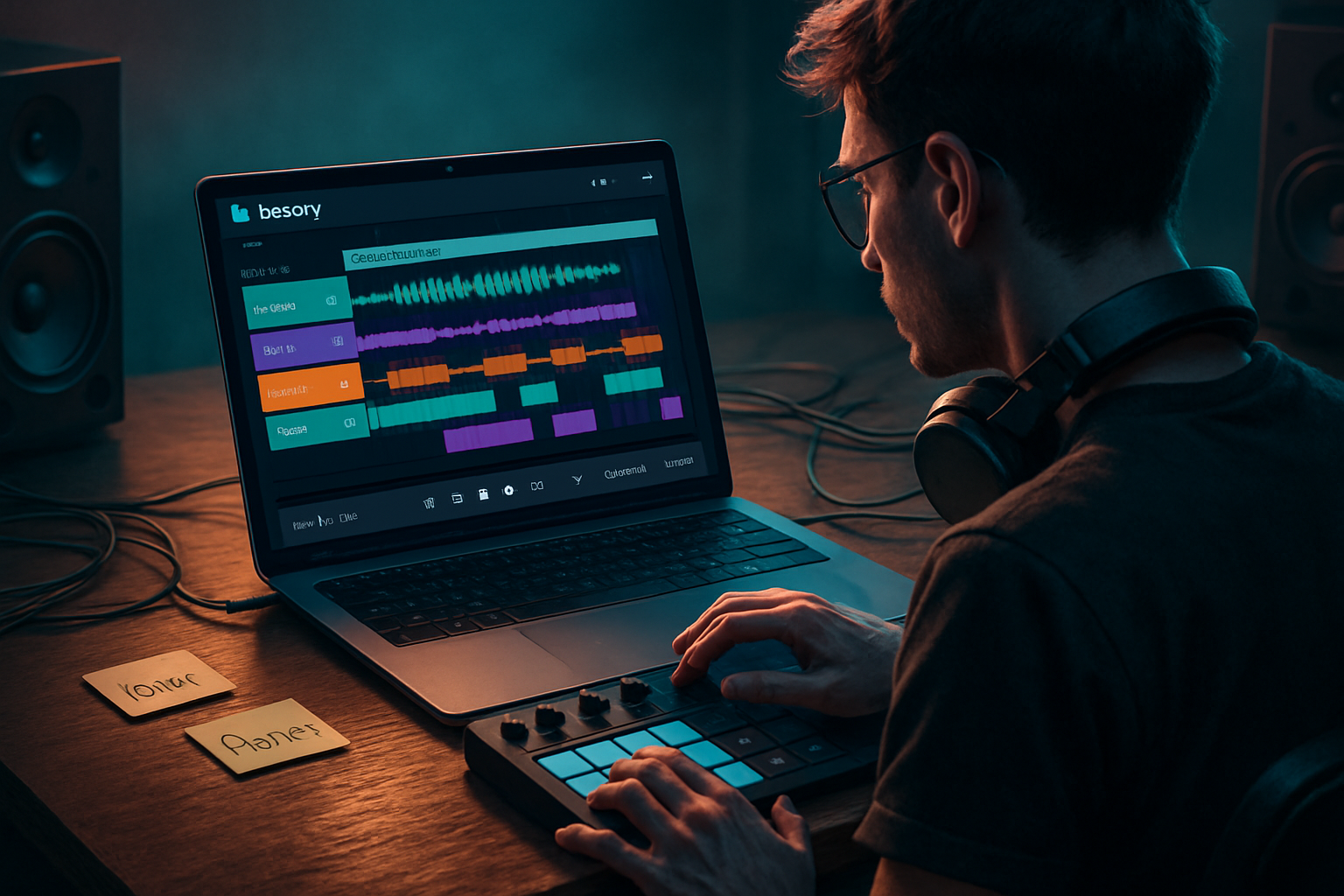· creativity · 6 min read
Aiva vs. The Competition: Why Aiva is the Future of AI Music Composition
A hands-on, outcome-first examination of how Aiva outperforms other AI music tools - in musical quality, workflow integration, licensing clarity and business-ready features - and what that means for independent artists and small businesses.

Outcome first: by the time you finish this post you’ll know exactly why Aiva can replace hours of guesswork, give you professional-sounding tracks you actually own, and fit cleanly into your music or content workflow - without forcing you to learn advanced audio engineering. Read on. You’ll finish with a practical roadmap to start using Aiva this week.
Why this matters (short answer)
High-quality music is no longer a luxury. It’s a brand asset. For independent artists it’s a way to compete. For small businesses it’s how ads, apps, and branding sound professional without a studio budget. The problem until now: most AI music tools trade either musicality, control, or licensing clarity for speed. Aiva changes that tradeoff.
The competition: landscape at a glance
- Aiva - an AI composer focused on musical structure, expressive orchestration, and business-ready licensing (AIVA).
- Amper - quick, royalty-free track creation geared to content creators (Amper Music).
- Boomy - instant song creation and distribution for streaming income (Boomy).
- Soundraw - customizable track generator with emphasis on mood and length (Soundraw).
- Research/toolkits - OpenAI’s MuseNet and Google Magenta are powerful research projects and developer toolkits but are not turnkey commercial services for creators (OpenAI MuseNet, Google Magenta).
Each of these tools serves a need. Some are great for rough ideas. Others are built to monetize low-friction output. But commercial use, musical nuance, and integration with professional workflows are where differences become decisive.
What makes Aiva stand out - the five pillars
1) Musical quality and compositional intelligence
Aiva is engineered to think like a composer. It models musical structure - phrase, counterpoint, orchestration - rather than just looping textures. That results in progressions that feel purposeful, not just generative wallpaper. You get motifs, development, and endings that resolve.
Why that matters: motifs and structure make a track memorable and usable as theme material for a brand or a trailer. You can hand a DAW-ready MIDI to a producer and save hours.
Source: Aiva product and features overview (AIVA).
2) Export and workflow integration (MIDI, stems, score)
Pro workflows win when AI integrates cleanly with your tools. Aiva gives exports that matter - MIDI for full editing, stems for mixing, and sheet music for live musicians. That lets you use the AI output as a starting point, not an immutable final.
Contrast: many quick-track generators only deliver finished audio files, which are harder to adapt in a professional session.
Source: Aiva feature descriptions (AIVA).
3) Licensing clarity and commercial readiness
For artists and businesses, rights matter. Aiva provides commercial licensing options designed for content producers and businesses. That clarity reduces legal risk and makes it straightforward to monetize or embed music in products and ads.
Contrast: some tools cascade confusing “royalty-free” claims or have platform-specific distribution rules, which creates uncertainty when you want to resell, sync, or adapt tracks.
Source: commercial/enterprise product info from Aiva and service descriptions from competitor sites (AIVA business, Amper).
4) Customization and control
Aiva lets you tweak form, instrumentation, tempo, and mood in meaningful musical terms. It’s not just a slider that makes things “happier.” You can sculpt arrangements and export editable data. That control is essential when you need distinct sonic identities - a podcast theme that’s different from your video intro.
5) Business tools and APIs
Aiva offers solutions for businesses that need scalable, licensed music for apps, games, adverts, and content at volume. That positions Aiva not just as a creative toy but as a music-as-a-service platform for companies of any size.
Source: Aiva business/API overview (AIVA).
How Aiva compares in real-world scenarios
Here are three short workflows comparing Aiva to typical alternatives.
- Podcast host who needs a theme (time - 2–4 hours)
- With Aiva - generate an orchestral or hybrid theme, export MIDI and stems, tweak the hook in your DAW, clear commercial license - done.
- With quick-track generators - get a passable theme fast, but you may be stuck with a stereo mix and limited edits.
- Indie game developer needing adaptive music (time - days)
- With Aiva - export stems and MIDI to implement layered, adaptive music; use the API to generate variants for procedural content.
- With research toolkits (Magenta) - powerful, but requires deep engineering to ship.
- Small business making ads for social (time - hours)
- With Aiva - produce a short, branded theme that can be varied across spots and legally licensed for campaigns.
- With Boomy or Amper - lightning-fast output, but potentially less distinctive composition and licensing nuance.
Pricing and accessibility - the tradeoffs
Aiva is positioned between free/instant creators and heavy bespoke composition. There are costs for pro features and commercial licensing. But those costs buy exportability, legal clarity, and outputs that scale into professional projects. If you need custom stems and full editability, the value becomes clear quickly.
For comparison: Boomy and Soundraw focus on volume and distribution at lower price points. Amper targets fast turnaround for content creators. Open-source and research tools give ultimate flexibility but require engineering resources (Boomy, Soundraw, Amper, Google Magenta).
Risks and what to watch for
- Copyright & authorship - AI-assisted composition is a shifting legal area. Rules vary by country and are evolving. When the stakes are high (film, large ad buys), consult legal counsel.
- Over-reliance - AI should accelerate creativity, not replace your unique artistic voice. Use Aiva as a collaborator.
- Homogeneity - many AIs trained on similar corpora can converge on familiar patterns. Use Aiva’s customization and human editing to keep output fresh.
Practical, step-by-step workflow for an independent artist
- Define the role of the music - theme, background, or lead. Short and clear.
- Use Aiva to generate 6–10 variations in the chosen mood and instrumentation. Export MIDI + stems.
- Pick the best motif and open the MIDI in your DAW. Rearrange, humanize, and add performance nuance.
- Replace synthetic instruments with live takes where it matters (vocals, solo instruments).
- Finalize mix using the exported stems and ensure you select the appropriate Aiva commercial license.
- Register your work where necessary and document the creative contributions for clarity.
This keeps you in control, speeds up the creative loop, and preserves legal clarity.
When another tool might be the right choice
- If you want instant background beds for low-stakes social posts and price is the only concern, Boomy or Amper may be faster and cheaper.
- If you’re a developer with engineering bandwidth and want to build bespoke generative systems, Google Magenta or OpenAI research models are better foundations.
Final verdict - why Aiva is the future for creators and small businesses
Aiva isn’t merely about producing sound quickly. It ties three things together: musical intelligence that respects composition, exports that plug into professional workflows, and licensing designed for real commercial use. Shortcuts get you there fast. Structure keeps you there consistently.
For independent artists who want professional polish without hiring an orchestra or a publisher, Aiva makes top-level composition accessible. For small businesses that need dependable, reusable, and legally sound music assets, Aiva provides a path from idea to licensed product with predictable outcomes.
That combination - creative quality, workflow interoperability, and commercial clarity - is what makes Aiva not just a better tool, but a practical blueprint for how music will be created and licensed in the next decade. In short: if you care about professional-sounding, editable, and legally safe music that scales, Aiva is the future.
References
- AIVA - product and business pages: https://www.aiva.ai
- Amper Music: https://www.ampermusic.com
- Boomy: https://www.boomy.com
- Soundraw: https://soundraw.io
- OpenAI MuseNet: https://openai.com/blog/musenet
- Google Magenta: https://magenta.tensorflow.org



